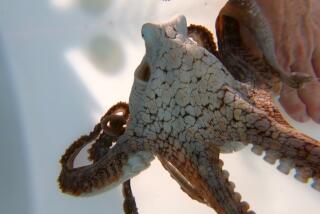Shark law’s problem is ‘bycatch’ loophole
Quince de Mayo.
It was a day worthy of celebration for commercial fishermen in Mexico.
But a dark day for recreational anglers and conservation groups who predict trouble for marlin, sailfish, dorado and other fisheries.
On May 15, 2007, NOM-029, the infamous shark norma -- a hotly debated work in progress for the past decade -- became law.
In Cabo San Lucas, a gargantuan resort community born of the popularity of big-game angling, 600 people aboard 120 boats paraded the marina waving banners in protest.
In the U.S., e-mail campaigns -- see www.billfish.org and www.seawatch.org -- are requesting that people who are following this issue direct any outrage to fisheries officials and Mexico President Felipe Calderon.
Concern is warranted. NOM-029 will permit long-line fishing from more than 3,000 skiffs, with 350-hook lines, as close as 10 miles; and from 233 medium-size vessels, up to 89 feet and with 1,000-hook lines, as close as 15 miles.
Larger vessels must remain 50 miles out and cannot enter the Sea of Cortez.
Government officials and non-government organizations supporting NOM-029 -- and they include Greenpeace, Defenders of Wildlife and other heavyweights -- have rightly claimed that a management plan is long overdue.
“We welcome it as a long-awaited, essential first step,” said Sonja Fordham, shark conservation program director for the Ocean Conservancy. “Effective safeguards must be taken now, before it is too late.”
NOM-029 limits fishing pressure through permits and imposes gear and area restrictions designed to ensure sustainability. It bans the capture of certain sharks and rays; phases out of drift gill-nets; and outlaws finning, or slicing fins from sharks and throwing their writhing bodies overboard.
But it does not adequately guard against exploitation of “bycatch” species such as dorado, or mahi-mahi, marlin and sailfish -- species that gave rise to sportfishing-related tourism and supposedly are off-limits to commercial fishermen.
Long-line hooks do not discriminate. Marlin, sailfish and dorado fetch a higher price than sharks, which are already depleted. So it’s reasonable to assume the bycatch species are really what the fishermen are after.
“I don’t know that they’ll be throwing anything back,” said Ellen Peel, president of the Florida-based Billfish Foundation.
Equally disconcerting is the granting of access to the medium-size boats -- refrigerated, more spacious and thus far more efficient than skiffs -- into coastal waters.
The original norma placed them 30 miles offshore but the commercial fishermen somehow gained a 15-mile restriction. This reduces an important buffer zone and places their unsightly vessels in waters frequented by sportfishing boats. Here’s the last thing Mexico should want vacationing anglers to encounter: a grungy crew on a grungier 89-foot boat hauling aboard 500 dead or writhing marlin.
“It’s like so much legislation in the States: Who wouldn’t vote for Katrina hurricane relief unless, of course, you knew that there were billions in pork in the same bill,” said Mike McGettigan, founder of the Portland, Ore.-based environmental watchdog group SeaWatch.
“Same with the shark norma. Who wouldn’t vote for legislation designed to protect sharks, unless of course you saw that it creates continued and new fishing pressure in already-depleted waters.”
Fortunately, modifications will be considered for up to a year and Mexico’s fisheries department will be pressured to set and enforce bycatch quotas, redraw the boundary for medium-size vessels, create exclusion zones around tourism areas and impose a ban on the sale of marlin and sailfish, thus reducing the temptation for long-liners to target billfish.
Such modifications make sense so who knows, maybe the next quince de Mayo will actually warrant celebration.
Southland’s first bluefin
The first bluefin tuna of the season was landed Monday aboard the American Angler out of San Diego, raising hopes for an early albacore bite.
The two species often swim together and Capt. Brian Kiyohara reported ideal conditions 120 miles southwest of Point Loma: 63-degree purplish water and an abundance of bait fish.
The 18-pound bluefin was caught by David Choate of Torrance.
A busy Everest season
Climbing routes on Mt. Everest, as the season winds to a close, have been as busy as L.A. freeways -- and nearly as deadly.
The tally as of Thursday morning, according to www.everestnews.com: 500 successful summits, five deaths.
Last year, the death toll reached 11, second only to 19 fatalities in 1996.
Straight shooters
That would be Democrats, not Republicans.
Congress members from both parties squared off recently in the annual Congressional Shootout in Washington, D.C.
The trap, skeet and sporting clays contest, sponsored by the Congressional Sportsmen’s Foundation, was won by Oklahoma Democrat Dan Boren.
The top-gun award, with a score of 66 broken clays out of 82, went to California’s Mike Thompson (D-St. Helena).
Finishing second in this category was Minnesota Democrat Collin Peterson, who shattered 62 clays, two more than Minnesota Republican John Kline.
Trip planner:
Santa Barbara
Humpback whales are abundant in the Santa Barbara Channel and the L.A. Chapter of the American Cetacean Society has openings for its annual all-day “Humpback Adventure” Saturday aboard the Condor Express. Past trips have produced numerous close encounters with these extroverted lugs. Cost: $90. Departure: 8 a.m. from Sea Landing. Details: (310) 548-0966.
More to Read
Sign up for Essential California
The most important California stories and recommendations in your inbox every morning.
You may occasionally receive promotional content from the Los Angeles Times.










